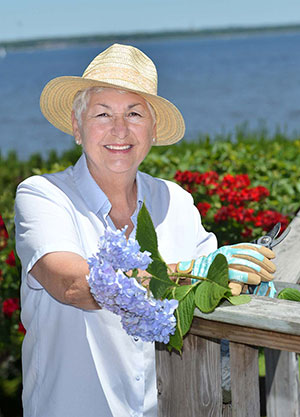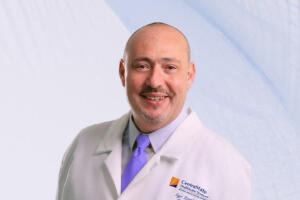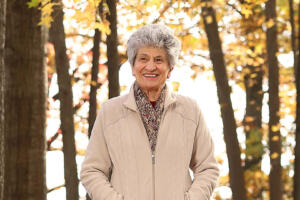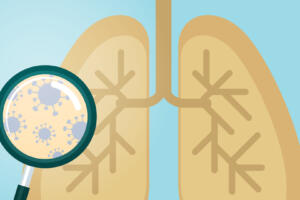 When Gail Olin of Laurence Harbor began experiencing occasional pain in her upper side, she was bothered but not overly concerned. As a transporter who drives nursing home residents to appointments, Gail, 77, frequently helps patients in and out of the bus, so she assumed she had pulled a muscle.
When Gail Olin of Laurence Harbor began experiencing occasional pain in her upper side, she was bothered but not overly concerned. As a transporter who drives nursing home residents to appointments, Gail, 77, frequently helps patients in and out of the bus, so she assumed she had pulled a muscle.
A few weeks later, she discussed the issue with her primary care physician, James Covalesky, DO, who is board certified in osteopathic medicine. He thought it might be a chipped rib, but initial imaging tests proved concerning. He referred Gail to Kenneth Barofsky, MD, a board-certified pulmonologist on staff at CentraState, who ordered a CT scan and a PET scan of the suspicious shadow. During a follow-up appointment, additional imaging tests suggested that the spot could be cancer.
The Virtues of VATS
To remove the tumor, Gail was referred to Robert J. Caccavale, MD, a board-certified thoracic surgeon on staff at CentraState. Dr. Caccavale recommended that Gail undergo video-assisted thoracic surgery, or VATS.
A traditional thoracotomy, or chest surgery, requires an incision of 10 to 14 inches as well as unavoidable injury to one or more ribs and damage to muscles. It also typically requires a 7- to 10-day hospital stay and a longer at-home recovery period.
Instead, VATS is performed using a small video camera attached to a thoracoscope, an instrument that is placed in the patient’s chest through one of four small incisions. The camera transmits high-definition, magnified images of the chest to monitors in the operating room, providing Dr. Caccavale and his partner, board-certified thoracic surgeon Jean-Philippe Bocage, MD, with a comprehensive view of the entire chest. Typically, patients experience a speedier recovery with less scarring, less pain, and fewer complications.
Drs. Caccavale and Bocage removed Gail’s stage 1 lung tumor in March, and she was discharged from the hospital three days later. They were able to remove the entire tumor, so she didn’t require chemotherapy or radiation.
“For older patients who can tolerate surgery, VATS is a great option,” says Dr. Caccavale. “In most cases, we can completely remove the tumor, avoiding the need for additional therapies that can weaken the immune system and take a toll on overall well-being.”
Before having the VATS procedure, Gail underwent emergency gall bladder removal surgery, which lengthened her recovery period after both surgeries. She was able to resume her regular activities about three weeks after surgery and is now back on the road transporting patients.
“I love to be busy, so I’m happy to be out and about again,” says Gail, who took on a deck renovation project this summer, along with planting a vegetable garden. “I feel pretty good, and I’m happy to be cancer free.”
For more information about CentraState’s Comprehensive Lung Cancer Program, or call 855-411-CANCER (855-411-2262).





